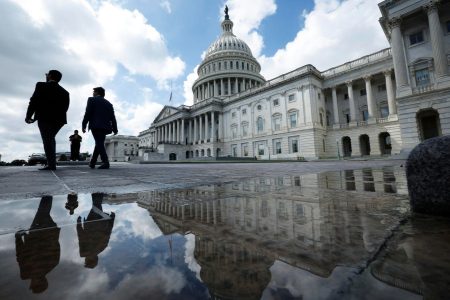Maryland’s digital advertising tax—codified as the Digital Advertising Gross Revenue Tax Act—is in the news again following a recent ruling by U.S. District Judge Lydia Kay Griggsby, in favor of the state.
It’s the latest—but surely not the last—move in efforts to invalidate the tax.
Details Of The Tax
The tax is imposed on taxpayers who provide digital advertising services in Maryland with global annual gross revenues of at least $100 million.
The law defines digital advertising services as advertisement services on a digital interface (defined as “any type of software, including a website, part of a website, or application, that a user is able to access”). This includes advertisements in the form of banner advertising, search engine advertising, interstitial advertising, and other comparable advertising services.
The rate of tax under the statute ranges from 2.5% to 10%, depending on the taxpayer’s global annual gross revenues. Revenue raised from the tax—which could be as much as $250 million each year—is earmarked for education.
History and Politics
George L. Salis, Vertex Chief Economist and Senior Tax Policy Director, explains that the tax is the first such tax in the U.S., with Maryland adopting a model originally used in Europe. Salis argues the origin of the tax “raises questions about its suitability for the nuances of the American interstate digital markets and its constitutional constraints and limitations.”
The controversial tax faced some political obstacles, squeaking into place. Maryland’s Governor at the time, Larry Hogan (R), vetoed the law, but the General Assembly successfully overrode the veto.
The legislature also amended the law to exclude advertising services on digital interfaces owned or operated by broadcast and news media entities. In addition, Taxpayers were barred from directly passing the tax on to a purchaser of digital advertising services (they could, however, make changes in their overall pricing to account for the tax on a bigger scale).
Salis says the latter piece—the so-called “pass-through prohibition”—creates market distortions. Specifically, he says, “It significantly impacts prices and digital market behavior, presenting challenges for global tech companies. Higher costs generally drive prices up, leading to negative externalities that ultimately affect consumers in various ways.”
(The “pass-through prohibition” also features prominently in recent litigation aimed at taking down the tax.)
Litigation
There have been a number of significant legal challenges filed in response to the tax.
One such action was filed in Maryland state court. Last year, a circuit court judge in Anne Arundel County awarded summary judgment to the plaintiffs (Comcast of California, Maryland, Pennsylvania, Virginia and West Virginia LLC and others), finding the tax unconstitutional. Specifically, Judge Alison Asti ruled that the tax violated both the federal Internet Tax Freedom Act and the Commerce Clause of the U.S. Constitution.
(The Internet Tax Freedom Act (ITFA) is intended to prevent “multiple or discriminatory taxes on electronic commerce.”)
The Maryland comptroller appealed the decision to the state’s high court. The Supreme Court of Maryland subsequent found that the plaintiffs in that suit had not exhausted their administrative remedies and dismissed the action. The resolution, however, they noted, was “not premised on any view of the merits” raised in the case.
Another challenge was filed by the U.S. Chamber of Commerce and other trade associations, including the Internet Association, NetChoice, and the Computer & Communications Industry Association. In that suit, the argument was based on the notion that the “pass-through prohibition” violated the First Amendment.
The federal case had been winding its way through the courts—and, until recently, had been largely dismissed on procedural grounds. The last issue was whether the “pass-through prohibition” clause in the tax violated the affected companies’ rights to free speech. Judge Griggsby ruled that the provision focused on conduct rather than speech—a critical distinction since it didn’t fully infringe on the plaintiff’s First Amendment rights. With that, the lawsuit was dismissed.
Why It Matters
Expect to see this kind of tax pop up in other states. Lawmakers in at least 11 other states have been waiting to see what happened with respect to these lawsuits in Maryland. With the courts giving the state the initial thumbs up, more states may now decide to pull the trigger.
However, many who have been closely following these lawsuits, including Salis, believe the matter is far from over. Additional cases are waiting in the wings, including those before the Maryland Tax Court, highlighting “the need for a conclusive and reliable judicial resolution.”
“Of course,” Sales says, “there will be winners and losers, as in all significant landmark resolutions.” Should the courts ultimately hold the law unconstitutional, he says, “the immediate and apparent winners will seem to be the BigTech companies. However, despite the uncertainty, consumers and SMEs (small and medium-sized enterprises) will be the real winners in the long term as prices remain stable, digital accessibility stays open and unrestricted, and the advertising market continues to thrive.”
Interestingly, even with such a ruling, we won’t necessarily have seen the last of the tax. Salis points out that Maryland could still rewrite the tax in response to any court rulings—and other states could adopt similar models with carveouts based on these rulings. Stay tuned.
Read the full article here










